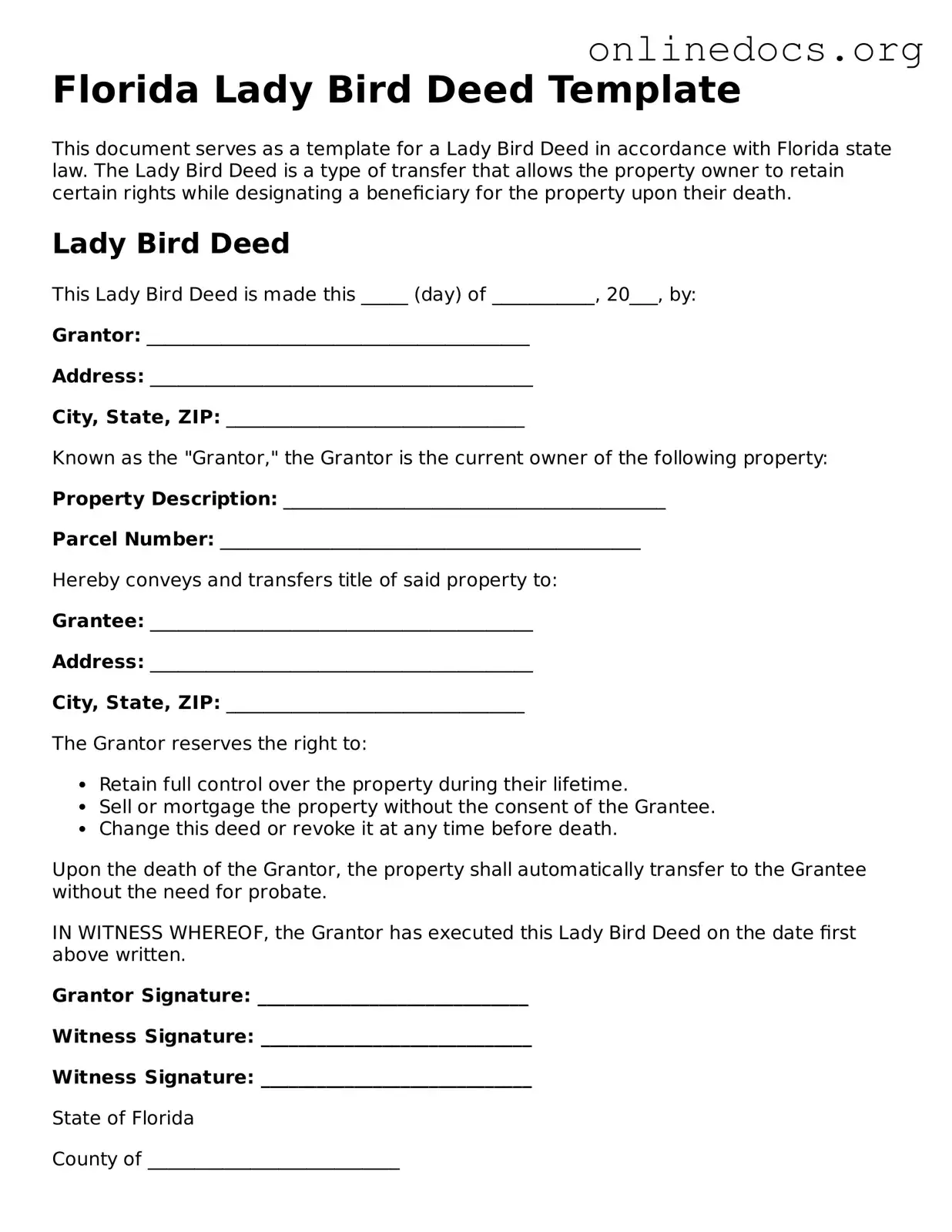The Lady Bird Deed, also known as an enhanced life estate deed, is similar to a traditional life estate deed. Both documents allow a property owner to retain the right to use and enjoy the property during their lifetime. However, the Lady Bird Deed offers more flexibility. It allows the owner to sell, lease, or mortgage the property without needing the consent of the remainderman, which is not the case with a traditional life estate deed.
A revocable living trust is another document that shares similarities with the Lady Bird Deed. Both tools are used for estate planning and can help avoid probate. However, a revocable living trust manages a broader range of assets and can provide greater privacy. The Lady Bird Deed specifically addresses real property and allows for an automatic transfer of ownership upon death, while a trust requires more active management and may involve multiple assets.
The warranty deed serves a different purpose but shares some similarities with the Lady Bird Deed. A warranty deed guarantees that the grantor holds clear title to the property and has the right to sell it. While both deeds transfer ownership, the warranty deed offers protection to the buyer against future claims, whereas the Lady Bird Deed primarily focuses on the rights of the grantor during their lifetime.
A transfer-on-death (TOD) deed is another estate planning tool that resembles the Lady Bird Deed. Both documents allow for the direct transfer of property upon the owner's death, bypassing probate. However, the Lady Bird Deed grants the owner a life estate, allowing them to retain control of the property during their lifetime, while a TOD deed only transfers ownership after death without any retained rights.
The joint tenancy deed is similar in that it allows for the transfer of property rights. In a joint tenancy arrangement, two or more people own property together, and the right of survivorship applies. If one owner dies, their share automatically passes to the surviving owner(s). The Lady Bird Deed, while it can be used in conjunction with joint tenancy, allows for more control and flexibility for the original owner during their lifetime.
The special warranty deed is another document that has some similarities with the Lady Bird Deed. Both can be used to transfer property, but a special warranty deed only guarantees that the grantor has not encumbered the property during their ownership. The Lady Bird Deed, by contrast, allows the owner to maintain control of the property while still ensuring a smooth transition upon death.
The family settlement agreement can also be likened to the Lady Bird Deed. Both documents can help avoid probate and facilitate the transfer of property among family members. However, a family settlement agreement is typically used to resolve disputes among heirs or beneficiaries, while the Lady Bird Deed is a proactive measure that clearly outlines the owner's wishes regarding property transfer upon death.
For those seeking to ensure their employment history is verified, our comprehensive Employment Verification process simplifies the task, providing a clear and efficient method for employers to confirm details of past employment.
Lastly, the deed in lieu of foreclosure is relevant in this context. While it primarily serves to transfer property ownership to avoid foreclosure, it shares the characteristic of being a method for transferring property rights. However, the Lady Bird Deed is focused on estate planning, allowing for continued use during the owner's lifetime, whereas a deed in lieu is often a last resort for homeowners facing financial difficulties.
